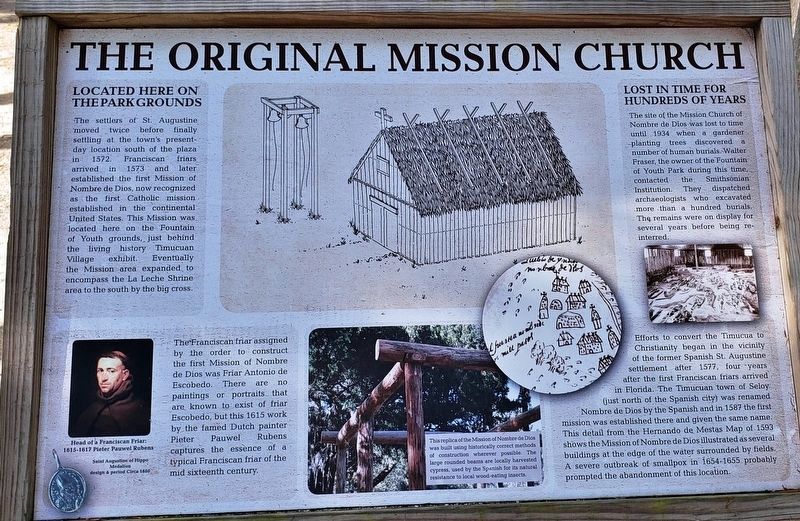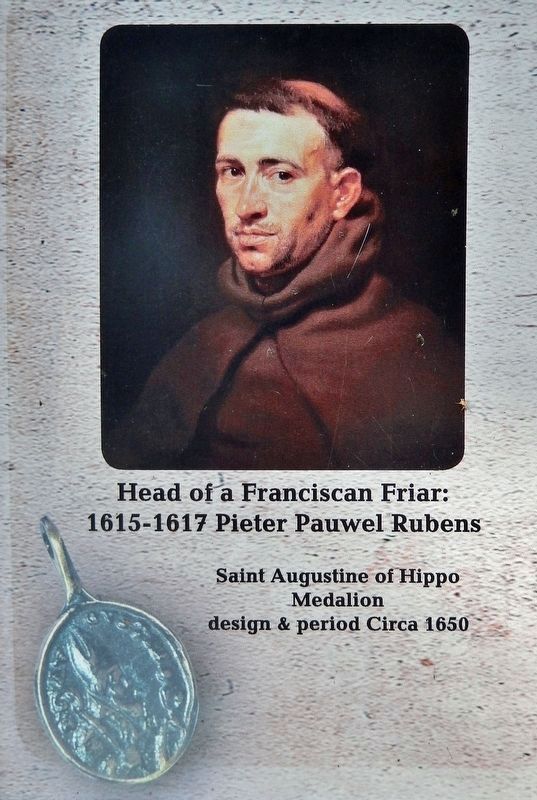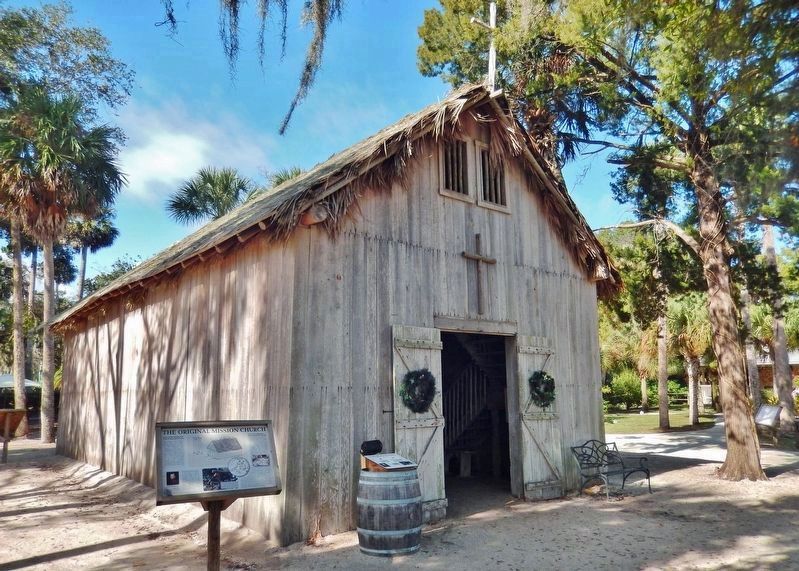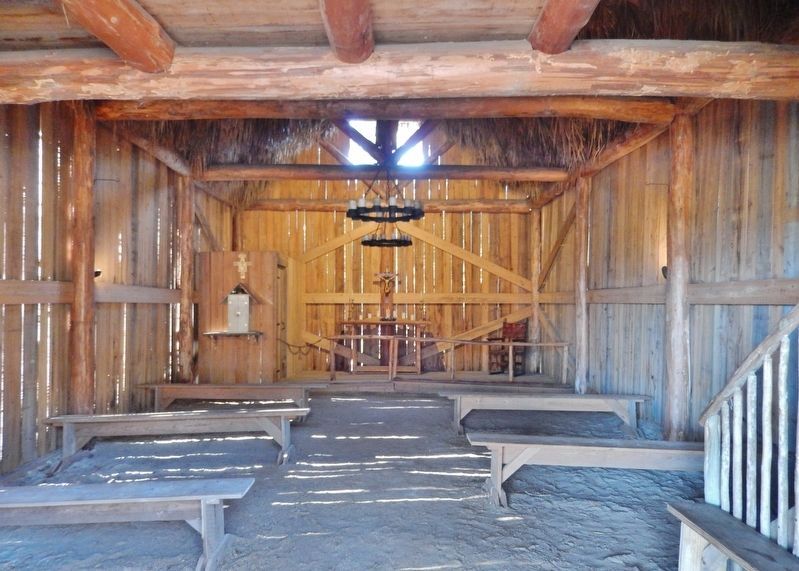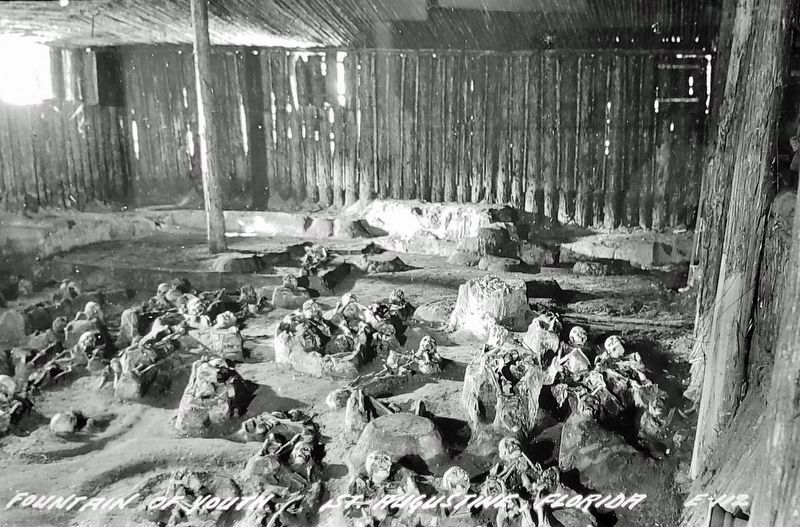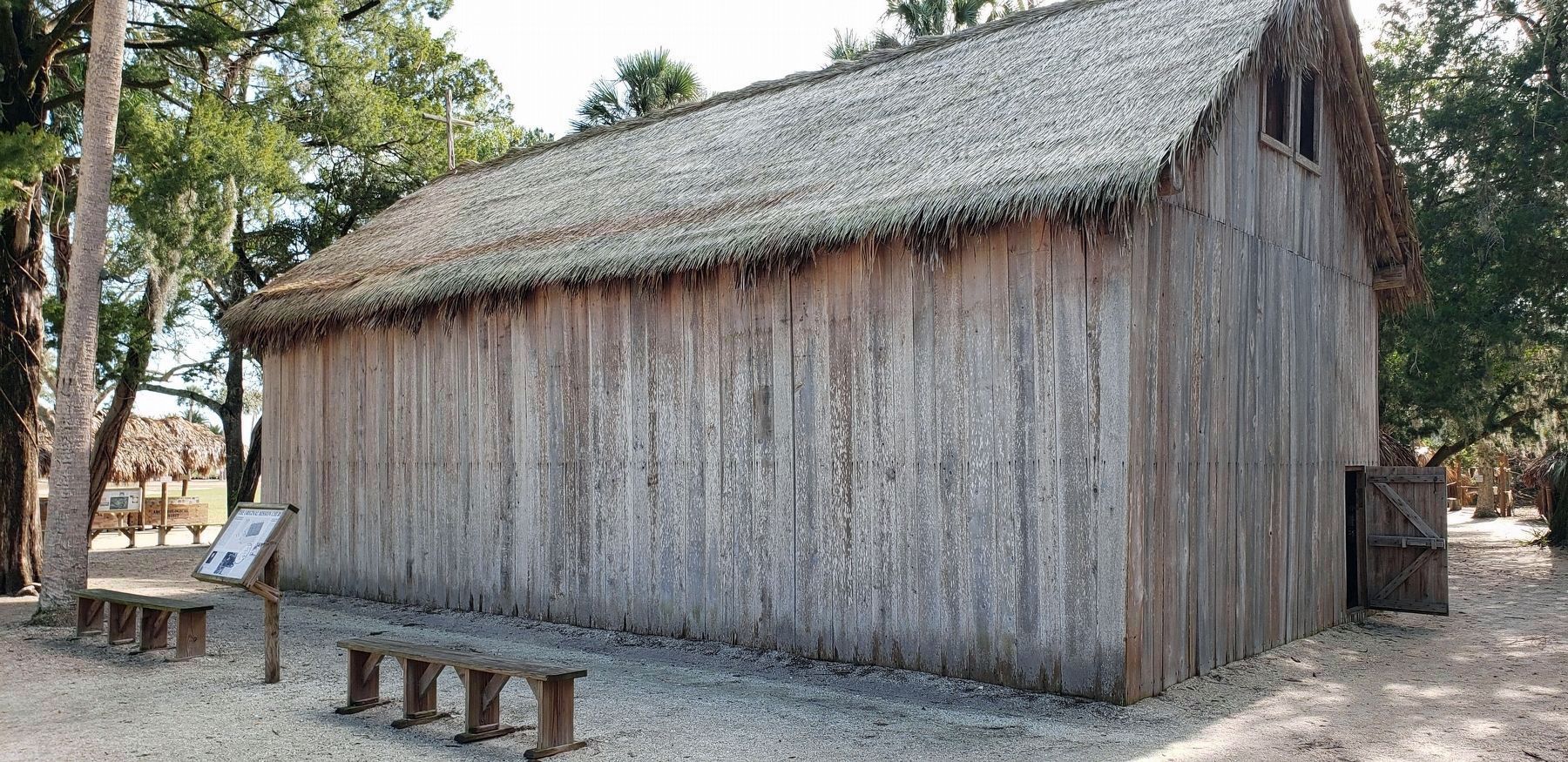St. Augustine in St. Johns County, Florida — The American South (South Atlantic)
The Original Mission Church
Located Here on the Park Grounds
The settlers of St. Augustine moved twice before finally settling at the town's present-day location south of the plaza in 1572. Franciscan friars arrived in 1573 and later established the first Mission of Nombre de Dios, now recognized as the first Catholic mission established in the continental United States. This Mission was located here on the Fountain of Youth grounds, just behind the living history Timucuan Village exhibit. Eventually the Mission area expanded to encompass the La Leche Shrine area to the south by the big cross.
This replica of the Mission of Nombre de Dios was built using historically correct methods of construction wherever possible. The large rounded beams are locally harvested cypress, used by the Spanish for its natural resistance to local wood-eating insects.
The Franciscan friar assigned by the order to construct the first Mission of Nombre de Dios was Friar Antonio de Escobedo. There are no paintings or portraits that are known to exist of friar Escobedo, but this 1615 work by the famed Dutch painter Pieter Pauwel Rubens captures the essence of a typical Franciscan friar of the mid sixteenth century.
Lost in Time for Hundreds of Years
The site of the Mission Church of Nombre de Dios was lost to time until 1934 when a gardener planting trees discovered a number of human burials. Walter Fraser, the owner of the Fountain of Youth Park during this time, contacted the Smithsonian Institution. They dispatched archaeologists who excavated more than a hundred burials. The remains were on display for several years before being re-interred.
Efforts to convert the Timucua to Christianity began in the vicinity of the former Spanish St. Augustine settlement after 1577, four years after the first Franciscan friars arrived in Florida. The Timucuan town of Seloy (just north of the Spanish city) was renamed Nombre de Dios by the Spanish and in 1587 the first mission was established there and given the same name.
This detail from the Hernando de Mestas Map of 1593 shows the Mission of Nombre de Dios illustrated as several buildings at the edge of the water surrounded by fields. A severe outbreak of smallpox in 1654-1655 probably prompted the abandonment of this location.
Topics. This historical marker is listed in these topic lists: Cemeteries & Burial Sites • Churches & Religion • Colonial Era • Settlements & Settlers. A significant historical year for this entry is 1572.
Location. 29° 54.417′ N, 81° 18.903′ W. Marker is in St. Augustine, Florida, in St. Johns County. Marker can be reached from Williams Street east of
Magnolia Avenue. Marker is located along the interpretive trail in Ponce de León's Fountain of Youth Archaeological Park, on the north side of the Mission Church restoration. Touch for map. Marker is at or near this postal address: 11 Magnolia Avenue, Saint Augustine FL 32084, United States of America. Touch for directions.
Other nearby markers. At least 8 other markers are within walking distance of this marker. 1770s British Anchor (a few steps from this marker); Archaeology of the Menéndez Encampment (a few steps from this marker); Mission Life in Nombre de Dios (a few steps from this marker); The Menéndez Settlement Field (a few steps from this marker); Life in the Timucuan Village (a few steps from this marker); Timucuan Style Dugout Canoe (within shouting distance of this marker); Copper Cauldron (within shouting distance of this marker); The Timucuan Home (within shouting distance of this marker). Touch for a list and map of all markers in St. Augustine.
More about this marker. There is an identical copy of this marker located nearby at the southeast corner of the Mission Church restoration.
Related markers. Click here for a list of markers that are related to this marker. Ponce de León's Fountain of Youth Archaeological Park
Also see . . .
1. Nombre de Dios: Built Right Here in 1587. Fountain of Youth Archeological Park website entry:
In 1587, Franciscan friars constructed the first mission in the continental United States right here on the grounds of the Fountain of Youth. The location of this Mission, however, was a mystery that revealed itself little by little. It began in 1934, when a gardener planting an orange tree discovered a skeleton, which proved to be a Timucuan. Over time, a large number of Timucua burials were exposed in the Park, and the pattern and position of their burials revealed the true location of the 1587 Mission of Nombre de Dios.(Submitted on December 25, 2021, by Cosmos Mariner of Cape Canaveral, Florida.)
2. The Church and the Missions. Florida Museum website entry:
Religious brotherhoods devoted to specific saints and rituals were active in St. Augustine from the earliest days of the colony onward. Although Jesuit missionaries began efforts to convert the Florida Indians to Catholicism shortly after the arrival of Menéndez, they were not successful, and they left the Florida mission field in 1571. The first Franciscans arrived in St. Augustine in 1573, and by 1587 had established the Mission of Nombre de Dios.(Submitted on December 25, 2021, by Cosmos Mariner of Cape Canaveral, Florida.)
Credits. This page was last revised on July 18, 2022. It was originally submitted on December 24, 2021, by Cosmos Mariner of Cape Canaveral, Florida. This page has been viewed 447 times since then and 42 times this year. Photos: 1, 2, 3, 4, 5, 6. submitted on December 25, 2021, by Cosmos Mariner of Cape Canaveral, Florida.
